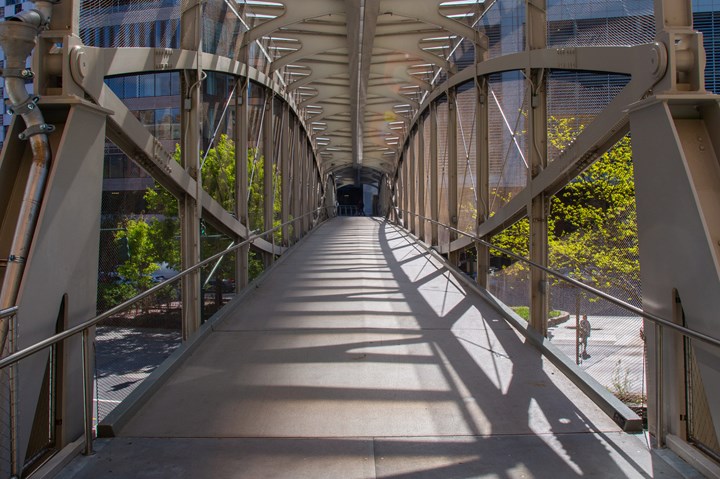Creative Composites Group integrates Ohio, Maine molding manufacturing capabilities
Flexible approach will provide added capacity to speed up project delivery, meet increased customer demands.
Thames pedestrian bridge decking was produced by Creative Composites Group. Photo Credit: Creative Composites Group.
Fiber-reinforced polymer (FRP) composites manufacturer Creative Composites Group (CCG, Alum Bank, Pa., U.S.) has integrated its molding manufacturing systems in Dayton, Ohio, and Augusta, Maine.
Through this integrated manufacturing approach, CCG says it is able to further elevate the group’s position as a specialist in primary manufacturing methods including infusion molding, filament winding, hand layup and pultrusion. By combining the manufacturing capabilities between two plants, CCG experts can determine which facility is best suited to meet customers’ needs and help walk customers through which manufacturing method is most appropriate given the project requirements.
“Through integrated molding manufacturing between two plants, CCG can better meet the needs of our customers and be nimble in terms of resourcing projects to help overcome ongoing industry supply shortages,” Shane Weyant, CEO, Creative Composites Group, says. “We can now work with both plants to schedule projects based on capacity and project location, speeding up project delivery and providing added cost efficiencies.”
In addition to elevating industry expertise, the integrated manufacturing approach also improves efficiencies, according to the company. Instead of two locations having different production schedules, a CCG project manager is able to organize production in a way that is optimized for both turnaround time and location — as some projects may need manufacturing simultaneously in both facilities to meet schedule, which occurred for a commuter rail platform project by CCG earlier this year.
Related Content
-
Composite rebar for future infrastructure
GFRP eliminates risk of corrosion and increases durability fourfold for reinforced concrete that meets future demands as traffic, urbanization and extreme weather increase.
-
Novel composite technology replaces welded joints in tubular structures
The Tree Composites TC-joint replaces traditional welding in jacket foundations for offshore wind turbine generator applications, advancing the world’s quest for fast, sustainable energy deployment.
-
Materials & Processes: Composites fibers and resins
Compared to legacy materials like steel, aluminum, iron and titanium, composites are still coming of age, and only just now are being better understood by design and manufacturing engineers. However, composites’ physical properties — combined with unbeatable light weight — make them undeniably attractive.








.jpg;maxWidth=300;quality=90)





